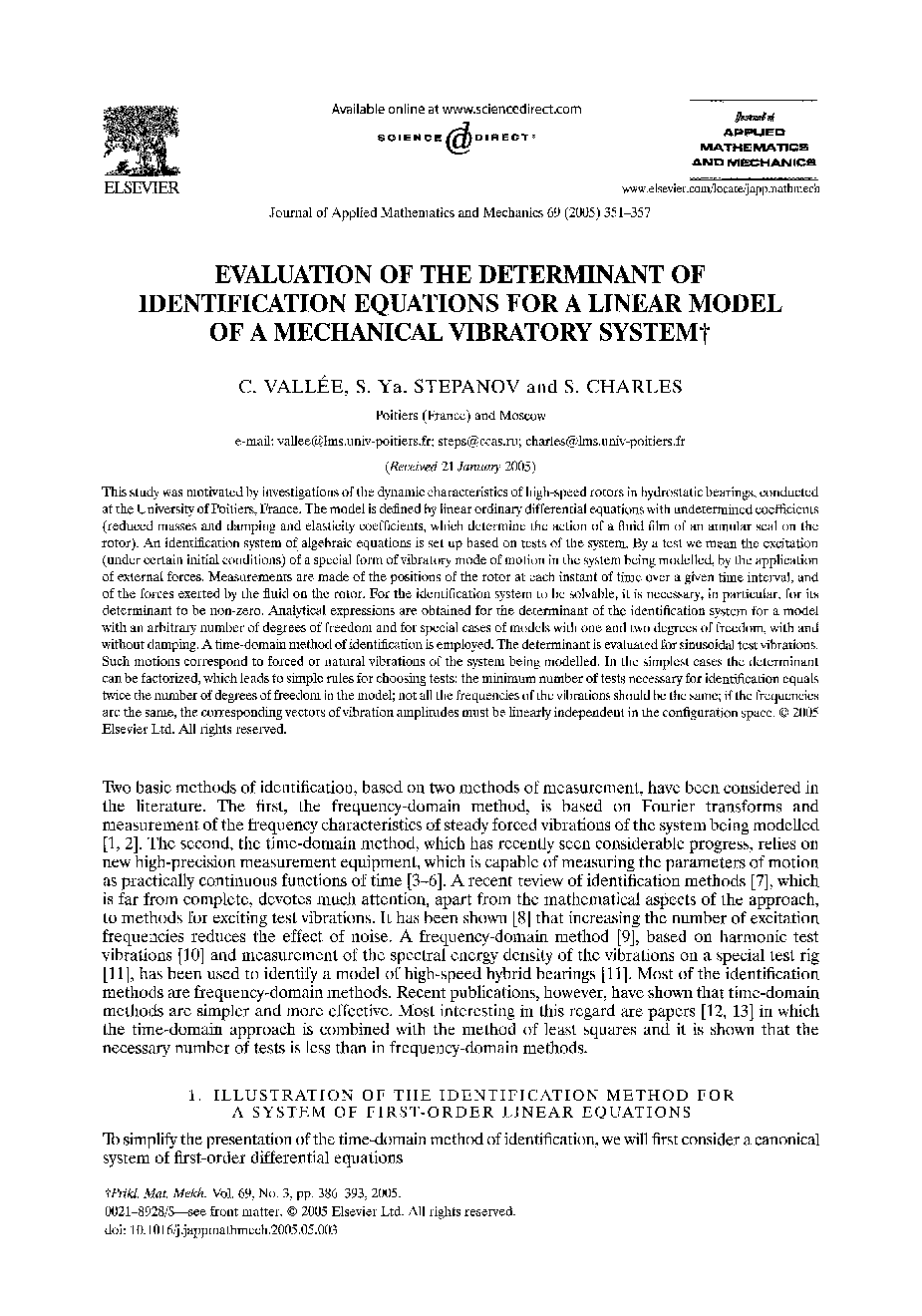| Article ID | Journal | Published Year | Pages | File Type |
|---|---|---|---|---|
| 10416914 | Journal of Applied Mathematics and Mechanics | 2005 | 7 Pages |
Abstract
This study was motivated by investigations of the dynamic characteristics of high-speed rotors in hydrostatic bearings, conducted at the University of Poitiers, France. The model is defined by linear ordinary differential equations with undetermined coefficients (reduced masses and damping and elasticity coefficients, which determine the action of a fluid film of an annular seal on the rotor). An identification system of algebraic equations is set up based on tests of the system. By a test we mean the excitation (under certain initial conditions) of a special form of vibratory mode of motion in the system being modelled, by the application of external forces. Measurements are made of the positions of the rotor at each instant of time over a given time interval, and of the forces exerted by the fluid on the rotor. For the identification system to be solvable, it is necessary, in particular, for its determinant to be non-zero. Analytical expressions are obtained for the determinant of the identification system for a model with an arbitrary number of degrees of freedom and for special cases of models with one and two degrees of freedom, with and without damping. A time-domain method of identification is employed. The determinant is evaluated for sinusoidal test vibrations. Such motions correspond to forced or natural vibrations of the system being modelled. In the simplest cases the determinant can be factorized, which leads to simple rules for choosing tests: the minimum number of tests necessary for identification equals twice the number of degrees of freedom in the model; not all the frequencies of the vibrations should be the same; if the frequencies are the same, the corresponding vectors of vibration amplitudes must be linearly independent in the configuration space.
Related Topics
Physical Sciences and Engineering
Engineering
Mechanical Engineering
Authors
C. Vallée, S.Ya. Stepanov, S. Charles,
